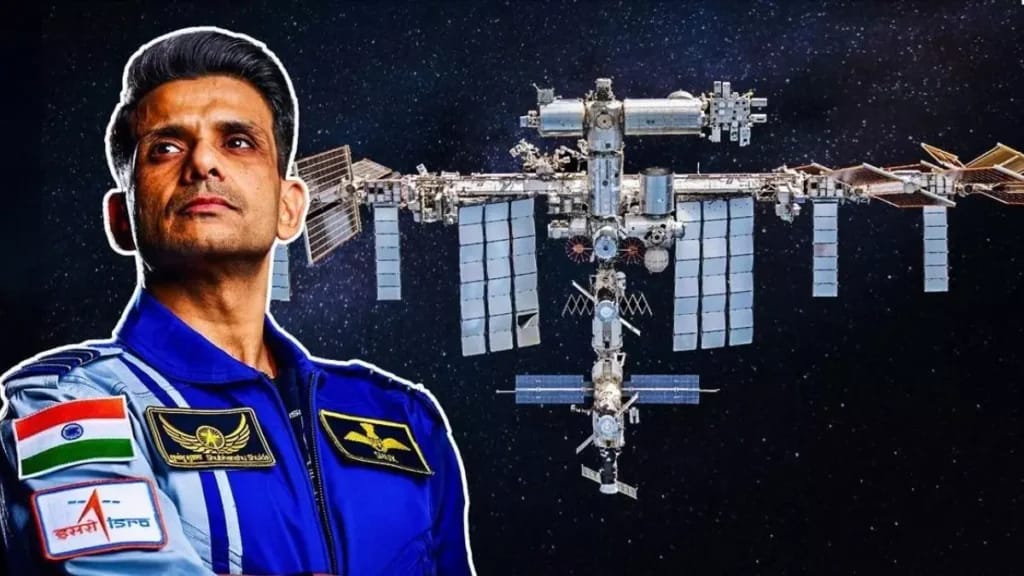
In a historic milestone for Indian space exploration, Group Captain Shubhanshu Shukla of the Indian Air Force has successfully completed seven pioneering scientific experiments aboard the International Space Station (ISS), marking the first time an Indian has lived and worked in space in over four decades.
Shukla flew as the pilot of Axiom Mission 4 (Ax-4) — a multinational private spaceflight mission organized by Axiom Space in collaboration with ISRO, NASA, and SpaceX. Launched in June 2025, the mission marked India’s return to human spaceflight since Rakesh Sharma’s landmark voyage in 1984. The Ax-4 crew spent 18 days in orbit, during which Shukla conducted a series of Indian-designed experiments that could have lasting implications for space science, healthcare, and sustainability.
A Mission of Scientific Purpose
Far from being a ceremonial presence aboard the ISS, Shubhanshu Shukla’s role centered on executing complex, hands-on research experiments specifically tailored to understand the impact of microgravity on living systems. All seven experiments were conceptualized and developed by Indian scientists, academics, and student researchers.
These experiments were focused on the biological sciences, with a special emphasis on life sciences, bio-regeneration, and space sustainability. Their core aim: to deepen our understanding of how life functions beyond Earth — knowledge that is essential for long-duration missions to the Moon, Mars, and potentially deep space.
Here Are the 7 Experiments Conducted by Shubhanshu Shukla on the ISS:
1. Microalgae Growth in Microgravity:This experiment studied the behavior of microalgae — microscopic plants known for their ability to produce oxygen and serve as a food source. Scientists aimed to determine whether microalgae can thrive in space and be used for air regeneration and nutrition during future deep space missions.
2. Seed Germination and Plant Growth:In a controlled setup, various types of seeds were monitored to understand how plant sprouting and root development differ in the absence of gravity. This research could aid the design of space farms for self-sustaining life-support systems.
3. Muscle Cell Regeneration in Zero-G:Shukla helped cultivate muscle cell tissues in space to observe how microgravity affects cellular repair and growth. This study may lead to new insights into muscle loss prevention, both for astronauts and patients on Earth who suffer from degenerative muscle conditions.
4. Tardigrade Behavior in Space:Also known as “water bears”, tardigrades are among the most resilient organisms on Earth. The experiment observed their metabolism, movement, and survival mechanisms in microgravity. Understanding these tiny creatures could unlock secrets to biological resilience in space.
5. Human Visual Perception and Cognitive Interaction in Microgravity:This experiment analyzed how astronauts perceive screens, colors, motion, and interface design in a zero-gravity environment — essential data for creating more efficient tools and dashboards for space missions.
6. Biopolymer Formation in Space:Scientists tested whether biopolymers — essential materials for drug delivery and tissue engineering — form differently in space. The results could impact both medical technology and biomanufacturing in orbital labs.
7. Microbiome Analysis in Space Habitats:This involved collecting data on human-associated microbes aboard the ISS to understand how microgravity alters microbial ecosystems. The results could help manage health risks in long-duration missions.
Why These Experiments Matter
While the experiments were conducted hundreds of kilometers above the Earth, their benefits are expected to be wide-ranging and grounded in solving real-world challenges. From sustainable agriculture and food production to healthcare innovation and environmental monitoring, the findings are likely to contribute both to the progress of human spaceflight and to improving life on Earth.
These studies are also key to building long-term habitation systems for missions to the Moon under Artemis and Mars expeditions under Gaganyaan’s future extensions.
A New Era for Indian Space
ExplorationShubhanshu Shukla’s participation in the Ax-4 mission signals more than just India’s return to space. It underscores a renewed collaborative approach between ISRO and international space agencies, the growing importance of Indian talent in global space science, and the nation’s commitment to contributing original research to humanity’s understanding of space.
His successful completion of the mission and its scientific goals has been hailed as a turning point in India’s space journey, opening doors for future Indian astronauts, research partnerships, and a greater role in space exploration.
As Shukla returns home, he not only carries the pride of the nation but also brings back valuable scientific insights that could influence the future of space travel — and life — for generations to come.
